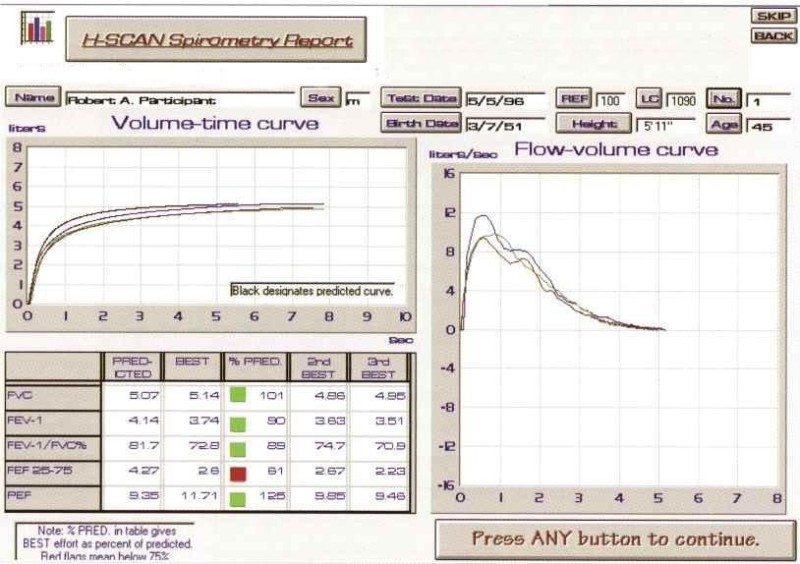
Medication adverse reactions (MAR) were defined according to the World Health Organization as an unintended or noxious response to a drug that occurs at doses normally used in humans. The medical record was used to identify adverse effects related to prevalent ILD pharmacotherapy that occurred within 6 months of each frailty assessment. Time to death, lung transplantation or censoring was calculated from the date of the first frailty assessment. Patients completing more than one frailty assessment contributed multiple non-overlapping 6-month follow-up intervals during the study period. Non-elective respiratory-related hospitalisations, non-respiratory-related hospitalisations and cumulative number of days admitted to hospital within 6 months of each frailty assessment were identified from the medical record. The SGRQ includes three domains relating to symptoms, activity and impact, as well as a total score that ranges from 0 to 100, with a higher score indicating worse quality of life. This 50-item patient-reported questionnaire was specifically developed for respiratory diseases, is frequently used in patients with ILD, and has recently been validated in CTD-associated ILD. Health-related quality of life was measured using the St George's Respiratory Questionnaire (SGRQ) without any modification. Frailty assessments that were completed within 6 months of a preceding frailty index calculation were excluded from analysis, in order to avoid overlapping observation periods. The frailty index was completed at study entry, including both incident and prevalent diagnoses of ILD, and during follow-up when patients returned for routine clinical assessments. The items within the frailty index were subcategorised into 19 items related to comorbidities (Co-FI), and 23 items related to independence and self-care (ISC-FI). We previously demonstrated that the frailty index has good internal consistency in fibrotic ILD and that frailty is more prevalent in patients with fibrotic ILD than in the general population. Data from the Canadian Study of Health and Aging show a submaximal limit of the frailty index of 0.65☐.02 in a general outpatient population, beyond which mortality is imminent. Frailty was defined as frailty index >0.21. Surveyed deficits without a patient response were removed from the denominator (1.5% of all surveyed items).


The frailty index is calculated as the proportion of items present divided by the total number of surveyed items, expressed as a continuous variable between 0 and 1. Patients confirmed or denied the presence of each equally weighted deficit, as previously described. Our prespecified central hypothesis was that frailty would independently predict adverse health outcomes in fibrotic ILD, thus indicating the central importance of functional ageing in the management of these patients.įrailty, representing functional ageing, was measured using a self-reported frailty index consisting of 42 deficits, including 19 comorbidities and 23 deficits related to independence and self-care. We used peripheral blood leukocyte telomere length as a proxy of biological ageing to further determine the specific role of functional ageing compared to biological and chronological ageing. frailty) on mortality, hospitalisations and quality of life in a large cohort of patients with fibrotic ILD. The goal of this study was therefore to determine the impact of functional ageing ( i.e. However, the risks associated with frailty as a proxy of accelerated functional ageing, and different impacts of functional, biological and chronological ageing in patients with fibrotic ILD have not been evaluated. Frailty has been associated with a higher risk of death in the general population, in patients with chronic obstructive pulmonary disease and in lung transplant candidates. This diminished physiological reserve and increased vulnerability to minor stressors is common in fibrotic ILD, and may expose these patients to adverse health outcomes. The accelerated functional ageing associated with fibrotic ILD is best represented by the concept of frailty, defined as the accumulation of age- and health-related deficits across physical, psychological and social systems. The time-dependent gradual loss of physical and social functioning with ageing is typically accelerated in patients with chronic diseases, and many cellular and molecular hallmarks of ageing are frequently and prematurely observed in patients with fibrotic ILDs.

Many fibrotic ILDs, including idiopathic pulmonary fibrosis (IPF), increase in incidence with age and are thus frequently associated with comorbidities that increase the complexity of management and place substantial burden on the healthcare system. Fibrotic ILDs are typically associated with exercise limitation, reduced quality of life and early mortality.

Interstitial lung disease (ILD) is an increasingly common group of inflammatory and fibrotic disorders that damage the lung parenchyma.


 0 kommentar(er)
0 kommentar(er)
